Albert Einstein
Albert Einstein
Born in the German Empire, Einstein moved to Switzerland in 1895, forsaking his German citizenship (as a subject of the Kingdom of Württemberg) the following year. At the age of seventeen, in 1897, he enrolled in the mathematics and physics teaching diploma program at the Swiss Federal Polytechnic School in Zürich, graduating in 1900. In 1901, he acquired Swiss citizenship, which he retained for the rest of his life. In 1903, he secured a permanent position at the Swiss Patent Office in Bern. In 1905, he submitted a successful PhD dissertation to the University of Zurich. In 1914, he moved to Berlin to join the Prussian Academy of Sciences and the Humboldt University of Berlin. In 1917, he became the director of the Kaiser Wilhelm Institute for Physics, and he also regained German citizenship, this time as a subject of the Kingdom of Prussia. In 1933, while visiting the United States, Adolf Hitler came to power in Germany. Horrified by the Nazi "war of extermination" against his fellow Jews,Einstein decided to remain in the US and was granted American citizenship in 1940.On the eve of World War II, he endorsed a letter to President Franklin D. Roosevelt alerting him to the potential German nuclear weapons program and recommending that the US begin similar research. Einstein supported the Allies but generally viewed the idea of nuclear weapons with great dismay.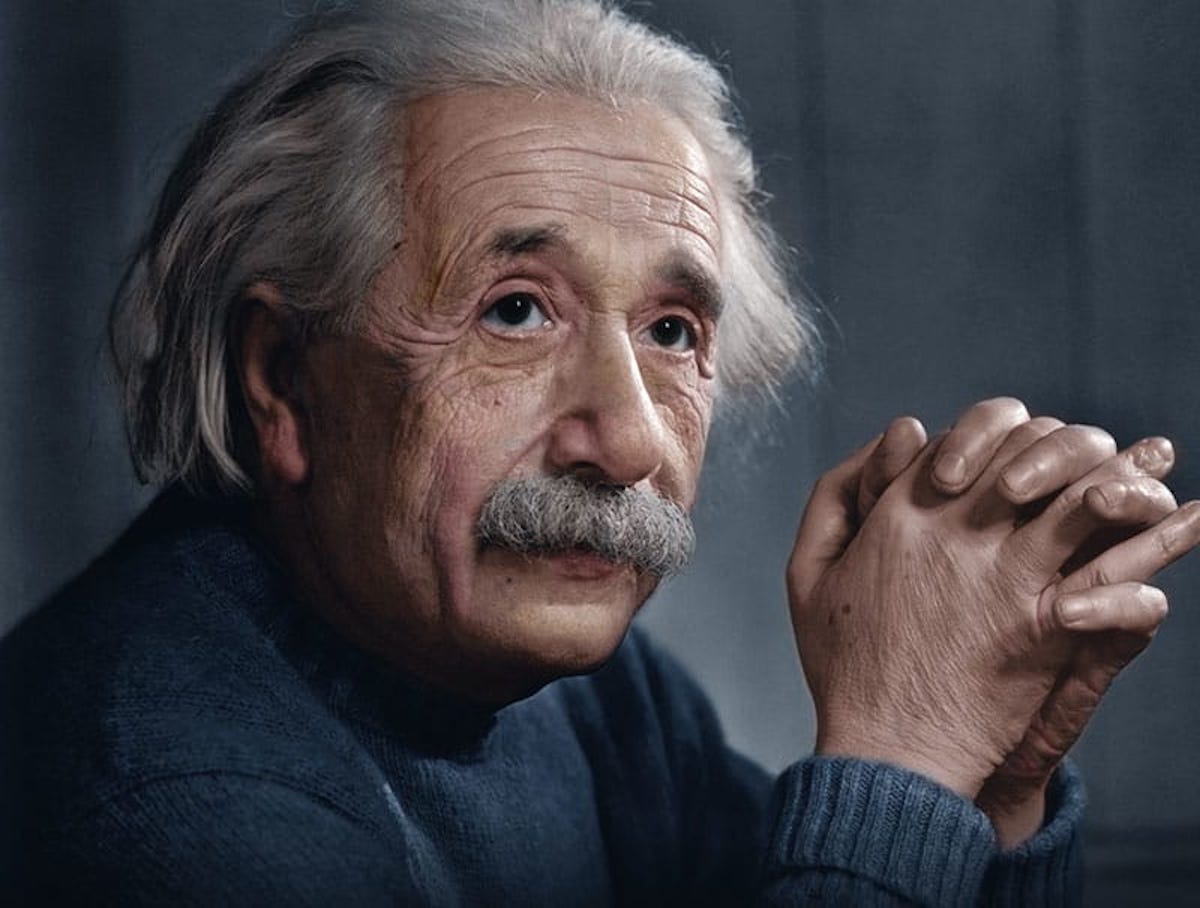
In 1905, a year sometimes described as his annus mirabilis (miracle year), Einstein published four groundbreaking papers. These outlined a theory of the photoelectric effect, explained Brownian motion, introduced his special theory of relativity—a theory that addressed the inability of classical mechanics to account satisfactorily for the behavior of the electromagnetic field—and demonstrated that if the special theory is correct, mass and energy are equivalent to each other. In 1915, he proposed a general theory of relativity that extended his system of mechanics to incorporate gravitation. A cosmological paper that he published the following year laid out the implications of general relativity for the modeling of the structure and evolution of the universe as a whole. The middle part of his career also saw him making important contributions to statistical mechanics and quantum theory. Especially notable was his work on the quantum physics of radiation, in which light consists of particles, subsequently called photons.
For much of the last phase of his academic life, Einstein worked on two endeavors that ultimately proved unsuccessful. Firstly, he advocated against quantum theory's introduction of fundamental randomness into science's picture of the world, objecting that "God does not play dice".Secondly, he attempted to devise a unified field theory by generalizing his geometric theory of gravitation to include electromagnetism as well. As a result, he became increasingly isolated from the mainstream of modern physics.:max_bytes(150000):strip_icc()/GettyImages_Einstein-3245599-58459dc93df78c0230ef6e3b.jpg)
Albert Einstein was born in Ulm, in the Kingdom of Württemberg in the German Empire, on 14 March 1879. His parents, secular Ashkenazi Jews, were Hermann Einstein, a salesman and engineer, and Pauline Koch. In 1880, the family moved to Munich's borough of Ludwigsvorstadt-Isarvorstadt, where Einstein's father and his uncle Jakob founded Elektrotechnische Fabrik J. Einstein & Cie, a company that manufactured electrical equipment based on direct current. 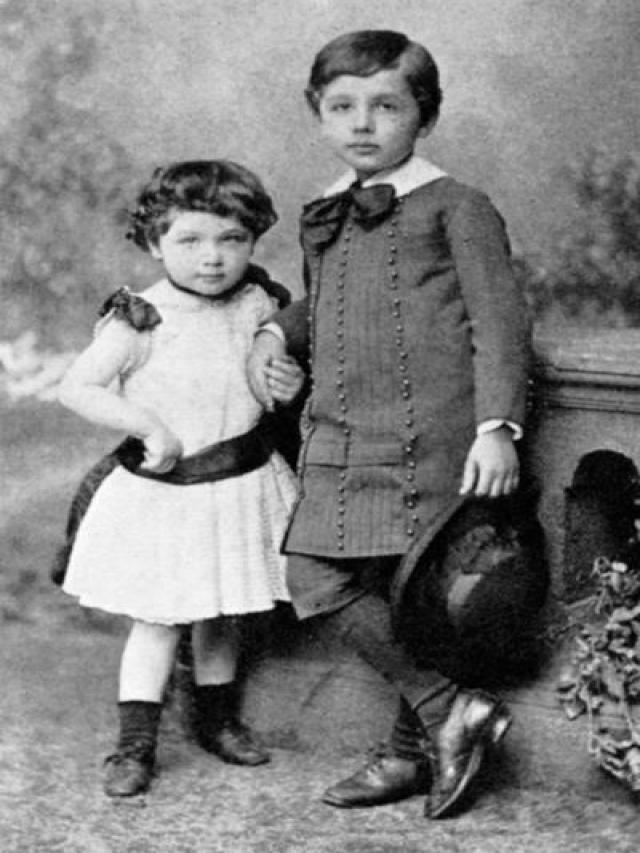
Albert attended a Catholic elementary school in Munich from the age of five. When he was eight, he was transferred to the Luitpold-Gymnasium (now known as the Albert-Einstein-Gymnasium , where he received advanced primary and then secondary school education.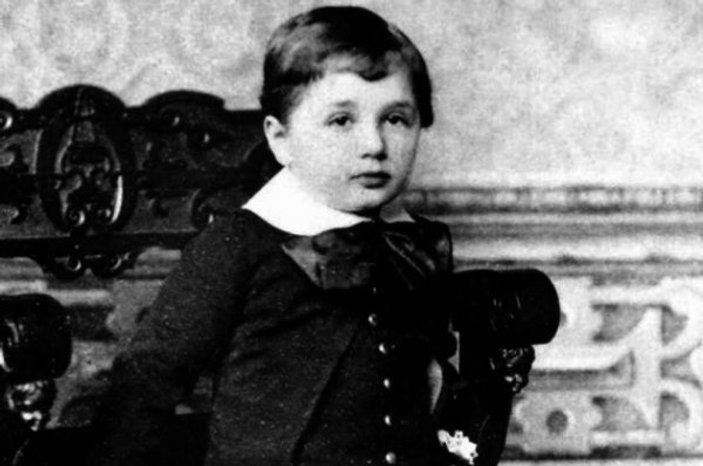
In 1894, Hermann and Jakob's company tendered for a contract to install electric lighting in Munich, but without success—they lacked the capital that would have been required to update their technology from direct current to the more efficient, alternating current alternative. The failure of their bid forced them to sell their Munich factory and search for new opportunities elsewhere. The Einstein family moved to Italy, first to Milan and a few months later to Pavia, where they settled in Palazzo Cornazzani. Einstein, then fifteen, stayed behind in Munich to finish his schooling. His father wanted him to study electrical engineering, but he was a fractious pupil who found the Gymnasium's regimen and teaching methods far from congenial. He later wrote that the school's policy of strict rote learning was harmful to creativity. At the end of December 1894, a letter from a doctor persuaded the Luitpold's authorities to release him from its care, and he joined his family in Pavia.While in Italy as a teenager, he wrote an essay entitled "On the Investigation of the State of the Ether in a Magnetic Field".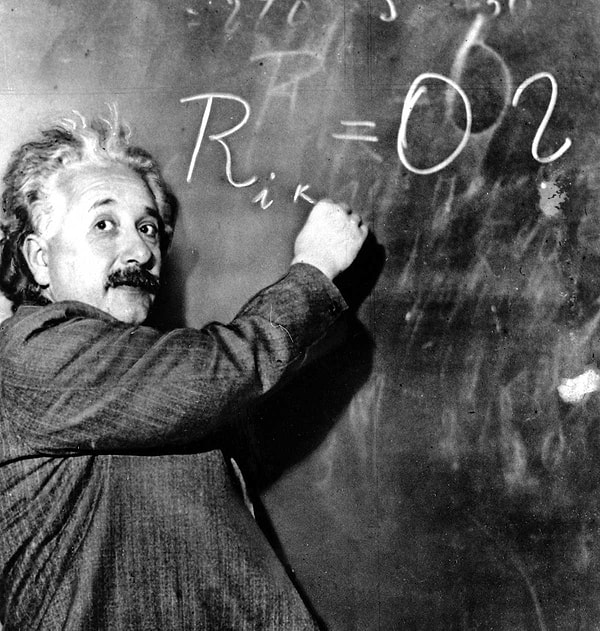
Einstein excelled at physics and mathematics from an early age, acquiring mathematical expertise typically found in a child several years his senior. He began teaching himself algebra, calculus, and Euclidean geometry when he was twelve, making such rapid progress that he discovered an original proof of the Pythagorean theorem before his thirteenth birthday. A family tutor, Max Talmud, mentioned that only a short time after giving the twelve-year-old Einstein a geometry textbook, the boy "had worked through the whole book. He thereupon devoted himself to higher mathematics ... Soon the flight of his mathematical genius was so high I could not follow."Einstein recorded that he had "mastered integral and differential calculus" while still just fourteen. His love of algebra and geometry was so great that at twelve, he was already confident that nature could be understood as a "mathematical structure".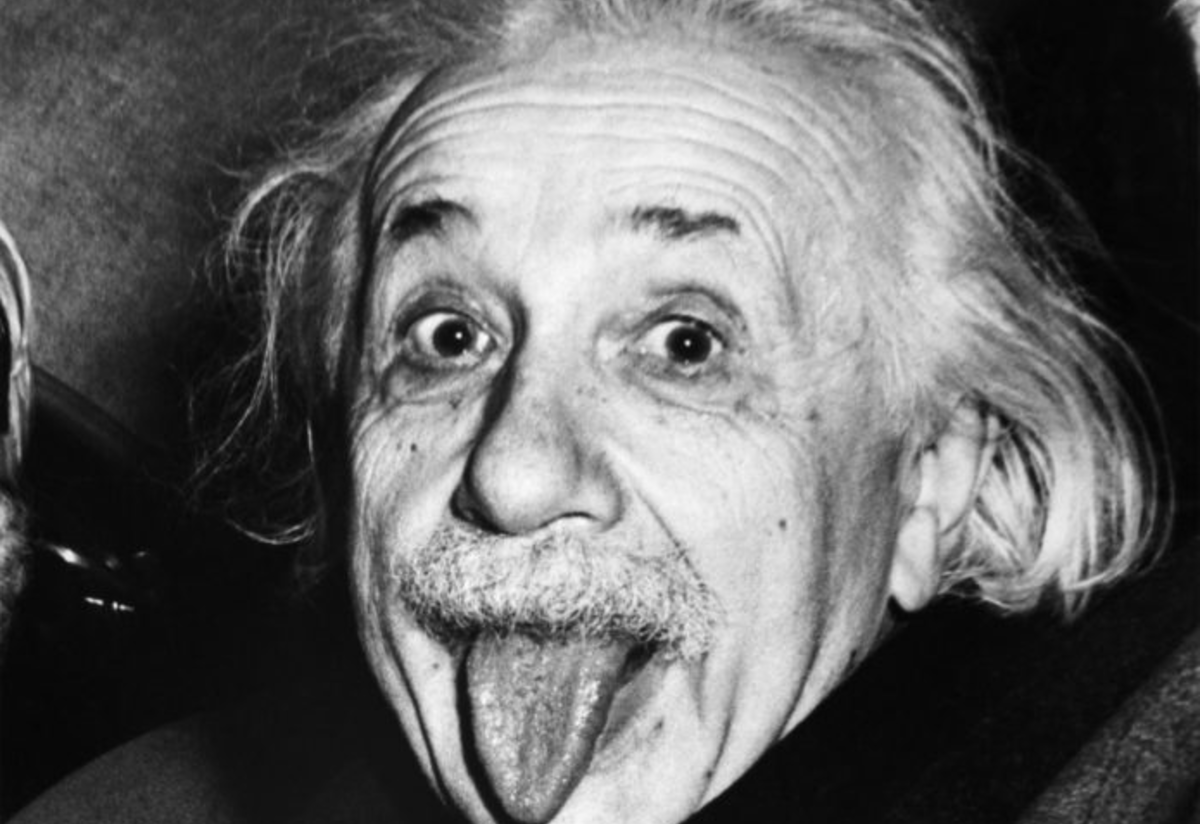
At thirteen, when his range of enthusiasms had broadened to include music and philosophy,Einstein was introduced to Kant's Critique of Pure Reason. Kant became his favorite philosopher; according to his tutor, "At the time, he was still a child, only thirteen years old, yet Kant's works, incomprehensible to ordinary mortals, seemed to be clear to him.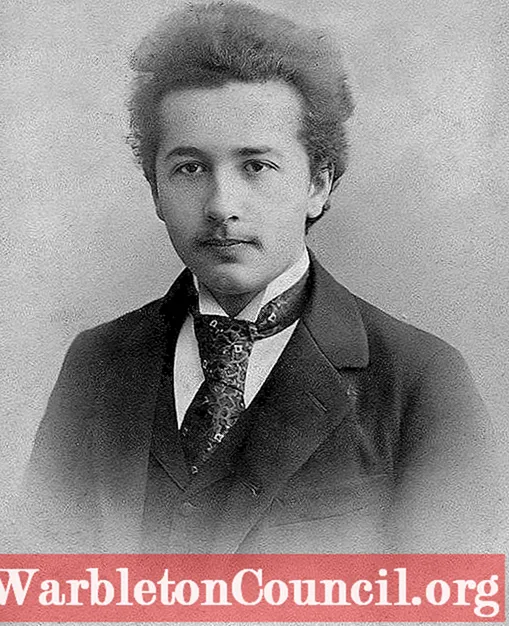
In 1895, at the age of sixteen, Einstein took the entrance examination for the Federal Polytechnic School (later the Eidgenössische Technische Hochschule, ETH) in Zürich, Switzerland. He failed to reach the required standard in the general part of the test, but performed with distinction in physics and mathematics.On the advice of the polytechnic's principal, he completed his secondary education at the Argovian cantonal school (a gymnasium) in Aarau, Switzerland, graduating in 1896. While lodging in Aarau with the family of Jost Winteler, he fell in love with Winteler's daughter, Marie. (His sister, Maja, later married Winteler's son Paul.)
In January 1896, with his father's approval, Einstein renounced his citizenship of the German Kingdom of Württemberg to avoid conscription into military service. The Matura (graduation for the successful completion of higher secondary schooling) awarded to him in September of that year acknowledged his excellent performance across most of the curriculum, granting him a top grade of 6 for history, physics, algebra, geometry, and descriptive geometry.At seventeen, he enrolled in the four-year mathematics and physics teaching diploma program at the Federal Polytechnic School. Marie Winteler, a year older than him, took up a teaching post in Olsberg, Switzerland.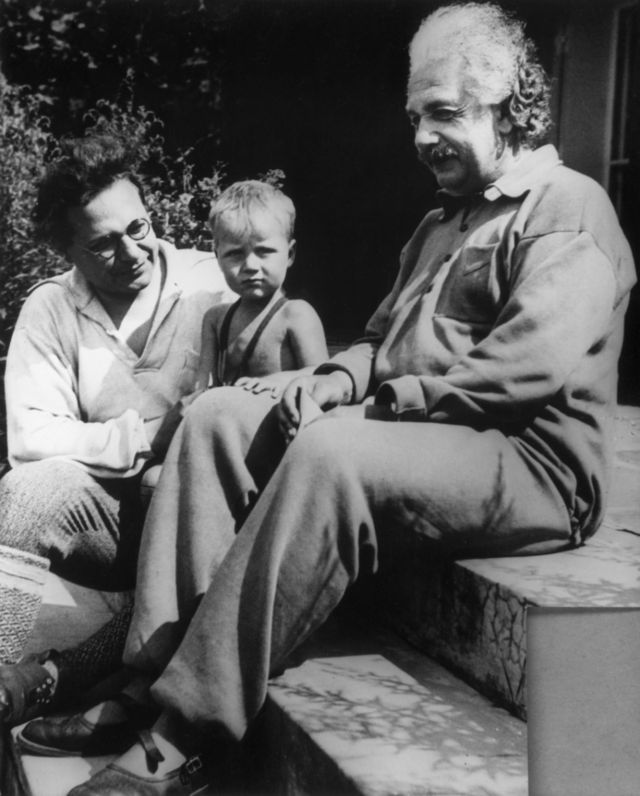
The five other polytechnic school freshmen following the same course as Einstein included just one woman, a twenty-year-old Serbian, Mileva Marić. Over the next few years, the pair spent many hours discussing their shared interests and learning about topics in physics that the polytechnic school's lectures did not cover. In his letters to Marić, Einstein confessed that exploring science with her by his side was much more enjoyable than reading a textbook in solitude. Eventually, the two students became not only friends but also lovers.
Correspondence between Einstein and Marić, discovered and published in 1987, revealed that in early 1902, while Marić was visiting her parents in Novi Sad, she gave birth to a daughter, Lieserl. When Marić returned to Switzerland, it was without the child, whose fate is uncertain. A letter from Einstein written in September 1903 suggests that the girl was either given up for adoption or died of scarlet fever in infancy.
Einstein and Marić married in January 1903. In May 1904, their son Hans Albert was born in Bern, Switzerland. Their son Eduard was born in Zürich in July 1910. In letters that Einstein wrote to Marie Winteler in the months before Eduard's arrival, he described his love for his wife as "misguided" and mourned the "missed life" that he imagined he would have enjoyed if he had married Winteler instead: "I think of you in heartfelt love every spare minute and am so unhappy as only a man can be."
In 1912, Einstein entered into a relationship with Elsa Löwenthal, who was both his first cousin on his mother's side and his second cousin on his father's.When Marić learned of his infidelity soon after moving to Berlin with him in April 1914, she returned to Zürich, taking Hans Albert and Eduard with her. Einstein and Marić were granted a divorce on 14 February 1919 on the grounds of having lived apart for five years. As part of the divorce settlement, Einstein agreed that if he were to win a Nobel Prize, he would give the money he received to Marić; she had to wait only two years before her foresight in extracting this promise from him was rewarded.
Einstein married Löwenthal in 1919. In 1923, he began a relationship with a secretary named Betty Neumann, the niece of his close friend Hans Mühsam. Löwenthal nevertheless remained loyal to him, accompanying him when he emigrated to the United States in 1933. In 1935, she was diagnosed with heart and kidney problems. She died in December 1936.
A volume of Einstein's letters released by the Hebrew University of Jerusalem in 2006 added further names to the catalog of women with whom he was romantically involved. They included Margarete Lebach (a married Austrian), Estella Katzenellenbogen (the rich owner of a florist business), Toni Mendel (a wealthy Jewish widow), and Ethel Michanowski (a Berlin socialite), with whom he spent time and from whom he accepted gifts while married to Löwenthal. After being widowed, Einstein was briefly in a relationship with Margarita Konenkova, thought by some to be a Russian spy; her husband, the Russian sculptor Sergei Konenkov, created the bronze bust of Einstein at the Institute for Advanced Study at Princeton.
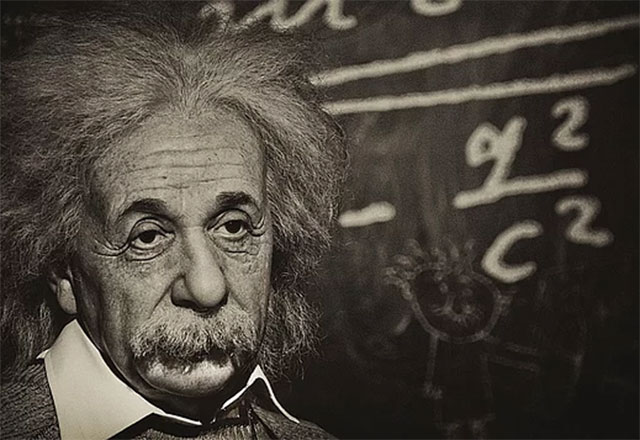
Following an episode of acute mental illness at about the age of twenty, Einstein's son Eduard was diagnosed with schizophrenia. He spent the remainder of his life either in the care of his mother or in temporary confinement in an asylum. After her death, he was committed permanently to Burghölzli, the Psychiatric University Hospital in Zürich.
Einstein graduated from the Federal Polytechnic School in 1900, duly certified as competent to teach mathematics and physics. His successful acquisition of Swiss citizenship in February 1901 was not followed by the usual sequel of conscription; the Swiss authorities deemed him medically unfit for military service. He found that Swiss schools too appeared to have no use for him, failing to offer him a teaching position despite the almost two years that he spent applying for one. Eventually, with the help of Marcel Grossmann's father, he secured a post in Bern at the Swiss Patent Office, as an assistant examiner.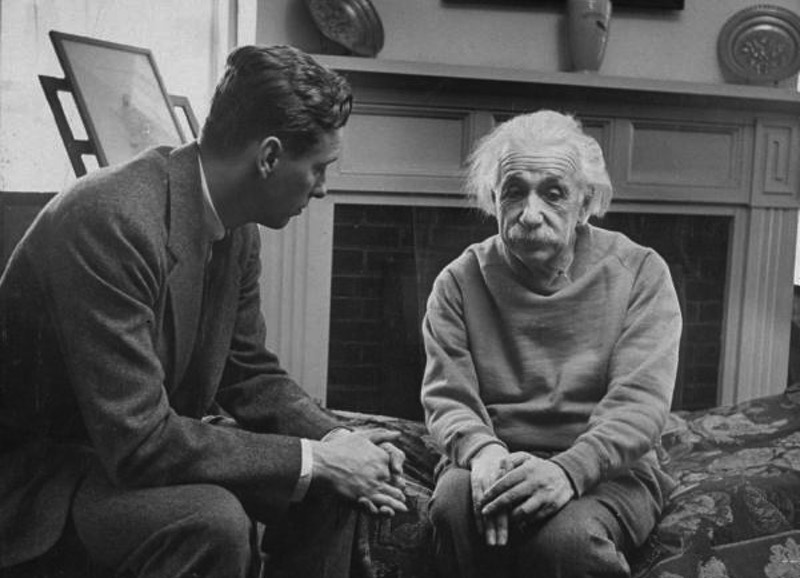
Patent applications that landed on Einstein's desk for his evaluation included ideas for a gravel sorter and an electric typewriter.His employers were pleased enough with his work to make his position permanent in 1903, although they did not think that he should be promoted until he had "fully mastered machine technology".It is conceivable that his labors at the patent office had a bearing on his development of his special theory of relativity. He arrived at his revolutionary ideas about space, time, and light through thought experiments about the transmission of signals and the synchronization of clocks, matters which also figured in some of the inventions submitted to him for assessment.
In 1902, Einstein and some friends whom he had met in Bern formed a group that held regular meetings to discuss science and philosophy. Their choice of a name for their club, the Olympia Academy, was an ironic comment upon its far-from-Olympian status. Sometimes they were joined by Marić, who limited her participation in their proceedings to careful listening.The thinkers whose works they reflected upon included Henri Poincaré, Ernst Mach, and David Hume, all of whom significantly influenced Einstein's own subsequent ideas and beliefs.
Einstein's first paper, "Folgerungen aus den Capillaritätserscheinungen" ("Conclusions drawn from the phenomena of capillarity"), in which he proposed a model of intermolecular attraction that he afterwards disavowed as worthless, was published in the journal Annalen der Physik in 1900.His 24-page doctoral dissertation also addressed a topic in molecular physics. Titled "Eine neue Bestimmung der Moleküldimensionen" ("A New Determination of Molecular Dimensions") and dedicated to his friend Marcel Grossman, it was completed on 30 April 1905 and approved by Professor Alfred Kleiner of the University of Zurich three months later. (Einstein was formally awarded his PhD on 15 January 1906.) Four other pieces of work that Einstein completed in 1905—his famous papers on the photoelectric effect, Brownian motion, his special theory of relativity, and the equivalence of mass and energy—have led to the year being celebrated as an annus mirabilis for physics almost as wonderful as 1666 (the year in which Isaac Newton experienced his greatest epiphanies). The publications deeply impressed Einstein's contemporaries.
Einstein's sabbatical as a civil servant approached its end in 1908, when he secured a junior teaching position at the University of Bern. In 1909, a lecture on relativistic electrodynamics that he gave at the University of Zurich, much admired by Alfred Kleiner, led to Zürich luring him away from Bern with a newly created associate professorship.Promotion to a full professorship followed in April 1911, when he accepted a chair at the German Charles-Ferdinand University in Prague, a move which required him to become an Austrian citizen of the Austro-Hungarian Empire. His time in Prague saw him producing eleven research papers.
In July 1912, he returned to his alma mater, the ETH Zurich, to take up a chair in theoretical physics. His teaching activities there centered on thermodynamics and analytical mechanics, and his research interests included the molecular theory of heat, continuum mechanics, and the development of a relativistic theory of gravitation. In his work on the latter topic, he was assisted by his friend, Marcel Grossmann, whose knowledge of the kind of mathematics required was greater than his own.
In the spring of 1913, two German visitors, Max Planck and Walther Nernst, called upon Einstein in Zürich in the hope of persuading him to relocate to Berlin. They offered him membership in the Prussian Academy of Sciences, the directorship of the planned Kaiser Wilhelm Institute for Physics, and a chair at the Humboldt University of Berlin that would allow him to pursue his research supported by a professorial salary but with no teaching duties to burden him. Their invitation was all the more appealing to him because Berlin happened to be the home of his latest girlfriend, Elsa Löwenthal. He duly joined the Academy on 24 July 1913, and moved into an apartment in the Berlin district of Dahlem on 1 April 1914. He was installed in his Humboldt University position shortly thereafter.
In April 1933, Einstein discovered that the new German government had passed laws barring Jews from holding any official positions, including teaching at universities. Historian Gerald Holton describes how, with "virtually no audible protest being raised by their colleagues", thousands of Jewish scientists were suddenly forced to give up their university positions, and their names were removed from the rolls of institutions where they were employed.
A month later, Einstein's works were among those targeted by the German Student Union in the Nazi book burnings, with Nazi propaganda minister Joseph Goebbels proclaiming, "Jewish intellectualism is dead."One German magazine included him in a list of enemies of the German regime with the phrase, "not yet hanged," offering a $5,000 bounty on his head. In a subsequent letter to physicist and friend Max Born, who had already emigrated from Germany to England, Einstein wrote, "... I must confess that the degree of their brutality and cowardice came as something of a surprise."After moving to the US, he described the book burnings as a "spontaneous emotional outburst" by those who "shun popular enlightenment" and "more than anything else in the world, fear the influence of men of intellectual independence".
In 1939, a group of Hungarian scientists that included émigré physicist Leó Szilárd attempted to alert Washington to ongoing Nazi atomic bomb research. The group's warnings were discounted. Einstein and Szilárd, along with other refugees such as Edward Teller and Eugene Wigner, "regarded it as their responsibility to alert Americans to the possibility that German scientists might win the race to build an atomic bomb, and to warn that Hitler would be more than willing to resort to such a weapon."To make certain the US was aware of the danger, in July 1939, a few months before the beginning of World War II in Europe, Szilárd and Wigner visited Einstein to explain the possibility of atomic bombs, which Einstein, a pacifist, said he had never considered.[ He was asked to lend his support by writing a letter, with Szilárd, to President Roosevelt, recommending the US pay attention and engage in its own nuclear weapons research.
The letter is believed to be "arguably the key stimulus for the U.S. adoption of serious investigations into nuclear weapons on the eve of the U.S. entry into World War II". In addition to the letter, Einstein used his connections with the Belgian royal family and the Belgian queen mother to get access with a personal envoy to the White House's Oval Office. Some say that as a result of Einstein's letter and his meetings with Roosevelt, the US entered the "race" to develop the bomb, drawing on its "immense material, financial, and scientific resources" to initiate the Manhattan Project.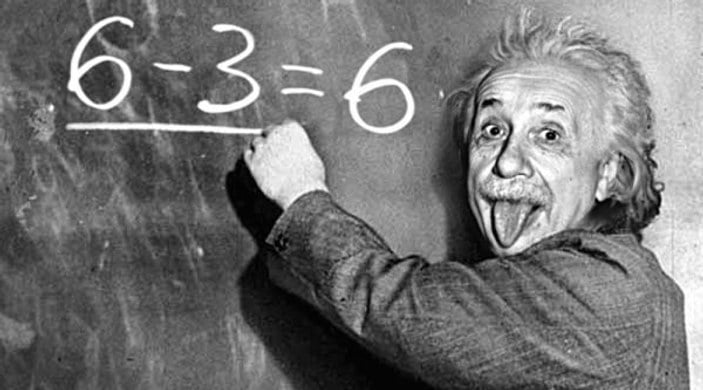
Einstein developed an appreciation for music at an early age. In his late journals, he wrote:
"If I were not a physicist, I would probably be a musician. I often think in music. I live my daydreams in music. I see my life in terms of music ... I get most joy in life out of music."
His mother played the piano reasonably well and wanted her son to learn the violin, not only to instill in him a love of music but also to help him assimilate into German culture. According to conductor Leon Botstein, Einstein began playing when he was 5. However, he did not enjoy it at that age.
In 1917, Einstein applied the general theory of relativity to the structure of the universe as a whole. He discovered that the general field equations predicted a universe that was dynamic, either contracting or expanding. As observational evidence for a dynamic universe was lacking at the time, Einstein introduced a new term, the cosmological constant, into the field equations, in order to allow the theory to predict a static universe. The modified field equations predicted a static universe of closed curvature, in accordance with Einstein's understanding of Mach's principle in these years. This model became known as the Einstein World or Einstein's static universe.
References
- Whittaker, E. (1 November 1955). "Albert Einstein. 1879–1955". Biographical Memoirs of Fellows of the Royal Society. 1: 37–67. doi:10.1098/rsbm.1955.0005. JSTOR 769242.
- ^ "The Gold Medal" (PDF). Royal Astronomical Society. Archived (PDF) from the original on 20 December 2021. Retrieved 20 December 2021.
- ^ "Membership directory". National Academy of Sciences. Archived from the original on 20 December 2021. Retrieved 20 December 2021.
- ^ Wells, John (3 April 2008). Longman Pronunciation Dictionary (3rd ed.). Pearson Longman. ISBN 978-1-4058-8118-0.
- ^ Yang, Fujia; Hamilton, Joseph H. (2010). Modern Atomic and Nuclear Physics. World Scientific. p. 274. ISBN 978-981-4277-16-7.
- ^ Bodanis, David (2000). E = mc2: A Biography of the World's Most Famous Equation. New York: Walker.
- ^ Jump up to:
- a b c "The Nobel Prize in Physics 1921". Nobel Prize. Archived from the original on 3 July 2018. Retrieved 11 July 2016.
- ^ Howard, Don A., ed. (2014) [First published 11 February 2004]. "Einstein's Philosophy of Science". Stanford Encyclopedia of Philosophy. The Metaphysics Research Lab, Center for the Study of Language and Information (CSLI), Stanford University. Archived from the original on 13 April 2021. Retrieved 4 February 2015.
- ^ Howard, Don A. (December 2005). "Albert Einstein as a Philosopher of Science" (PDF). Physics Today. 58 (12): 34–40. Bibcode:2005PhT....58l..34H. doi:10.1063/1.2169442. S2CID 170769196. Archived (PDF) from the original on 28 August 2015. Retrieved 8 March 2015 – via University of Notre Dame, Notre Dame, IN, author's personal webpage.
- ^ "Physics: past, present, future". Physics World. 6 December 1999. Retrieved 1 August 2023.
- ^ Jump up to:
- a b "Result of WordNet Search for Einstein". 3.1. The Trustees of Princeton University. Archived from the original on 28 August 2015. Retrieved 4 January 2015.
- ^ Levenson, Thomas (9 June 2017). "The Scientist and the Fascist". The Atlantic. Archived from the original on 12 May 2019. Retrieved 23 August 2018.
- ^ Paul S. Boyer; Melvyn Dubofsky (2001). The Oxford Companion to United States History. Oxford University Press. p. 218. ISBN 978-0-19-508209-8.
- ^ "Albert Einstein on nuclear weapons | Wise International". wiseinternational.org. Retrieved 23 October 2022.
- ^ Jump up to:
- a b Galison (2000), p. 377.
- ^ Jump up to:
- a b "Scientific Background on the Nobel Prize in Physics 2011. The accelerating universe" (PDF). Nobel Media AB. p. 2. Archived from the original (PDF) on 16 May 2012. 2022. Retrieved 24 November 2015.


































